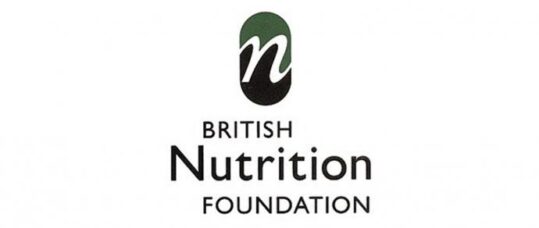Cows’ milk protein allergy in infants and young children

Cows’ milk protein allergy (CMPA), one of the most common food allergies in early childhood, is affecting some 3-6% of infants and young children.1
Although most children will grow out of this allergy by the age of five, it can be a worrying time for parents and managing it can be challenging. In this week’s blog, we outline some useful facts on CMPA that may help clarify some of the misconceptions around it.
What is CPMA?
CMPA is caused by an abnormal reaction by the immune system to milk proteins, which can cause immediate or delayed appearance of symptoms, such as stomach cramps or diarrhoea, after ingestion of cows’ milk.
Is it the same as lactose intolerance?
As they are both caused by an adverse reaction to milk and share some similar symptoms, CMPA is often confused with lactose intolerance and their names used interchangeably.2 However, the two conditions are different; the latterdoes not involve the immune system, but rather refers to symptoms caused by the inability to produce sufficient lactase, the enzyme required for digestion and absorption of the milk sugar lactose. Lactose intolerance is rare in very young children, and while CMPA requires strict avoidance of dairy, interestingly many people with lactose intolerance can have small amounts of milk and dairy products.
Related Article: Improving lung health one song at a time
Professional diagnosis of CPMA
Self-reporting of CMPA is common3 but it is important that diagnosis is made by a health professional. Unnecessary avoidance of particular foods or whole food groups (such as dairy) from a child’s diet could compromise nutritional adequacy and growth if not managed properly.4 Very sensitive babies who are breastfed can react to cows’ milk protein that their mother has consumed and passed on via breast milk, which may require avoidance of dairy in the mother’s diet.5 Non-breastfed infants can be given cows’ milk substitutes (eg extensively hydrolysed or amino-acid based formulas), however, soya-based formula milks are not recommended for infants under six months due to their phytoestrogen content.6 Additionally, a significant number of children with CPMA are also allergic to soy.7 Although some parents may think goats’ or sheep’s milk would be a suitable healthy alternative, there is ahigh cross-reactivity with cows’ milk proteins, ie there are significant similarities between cow, sheep and goat milk proteins and 90% of children will react in the same way.4
Milk and dairy products (such as cheese and yogurt) are commonly consumed foods at this age and can provide important nutrients; for example energy and protein for growth and repair, calcium and phosphorus for teeth and bone development and vitamin B12 for the maintenance of healthy nerves and red blood cells. Therefore, it is particularly important to ensure that young children on a cows’ milk-free diet obtain enough of these nutrients through fortified dairy alternatives. Without some dietetic assistance, a restricted diet may lead to faltered growth.8
As most children grow out of CMPA, re-evaluation of the child should take place. This process of monitoring and reassessment is important so avoidance of dairy can be minimised and quality of life for children and their carers may be improved.9
Acknowledgements
We are grateful to Emily Robinson, from Robert Gordon University, for her input in writing this blog post.
Resources
NICE guidelines. Food allergy in under 19s: assessment and diagnosis. https://www.nice.org.uk/guidance/cg116/resources/food-allergy-in-under-19s-assessment-and-diagnosis-35109392795845 (accessed 25/11/2015).
References:
Related Article: Health visitors to play integral role in improving childhood vaccinations uptake
1) Allergy UK. Milk Allergy. https://www.allergyuk.org/about-allergy/allergy-in-childhood/cows-milk-allergy/ 20/11/2015). Note: Link replaced by https://www.allergyuk.org/about-allergy/allergy-in-childhood/cows-milk-allergy/
2) British Dietetic Association. Food Fact Sheet – Milk Allergy. https://www.bda.uk.com/resource/milk-allergy.html (accessed 20/11/2015).
3) World Allergy Organisation. World Allergy Organization (WAO) Diagnosis and Rationale for Action against Cow’s Milk Allergy (DRACMA) Guidelines. http://www.bsaci.org/Guidelines/DRACMAguidelines1.pdf(accessed 20/11/2015).
4) British Dietetic Association, Joan Gandy ed. Manual of Dietetic Practice. 5th edition. West Sussex: John Wiley and Sons; 2014.
5) Allergy UK. Does my child have cows’ milk protein allergy? (no longer available).
6) NHS Choices. Can I give my baby soya-based infant formula? http://www.nhs.uk/chq/Pages/can-I-give-my-baby-soya-based-infant-formula.aspx?CategoryID=62& (accessed 25/11/2015).
Related Article: Supporting student nurses on placement in general practice
7) Venter C. et al. Diagnosis and management of non-IgE-mediated cow’s milk allergy in infancy – a UK primary care practical guide. Clinical and Translational Allergy 2013;3:23. http://www.ctajournal.com/content/3/1/23 (accessed 25/11/2015).
8) Venter C, Meyer, R. Symposium on ‘Dietary management of disease’ Session 1: Allergic disease – The challenges of managing food hypersensitivity. The Nutrition Society 2009;69:11-24. http://journals.cambridge.org/download.php?file=%2FPNS%2FPNS69_01%2FS0029665109991832a.pdf&code=f11a86d6aca359daa8274c4fdfabca59 (accessed 25/11/2015).
9) NICE. Cows’ milk protein allergy in children. http://cks.nice.org.uk/cows-milk-protein-allergy-in-children#!scenario:1 (accessed 01/12/2015).

See how our symptom tool can help you make better sense of patient presentations
Click here to search a symptom


Cows’ milk protein allergy (CMPA), one of the most common food allergies in early childhood, is affecting some 3-6% of infants and young children



